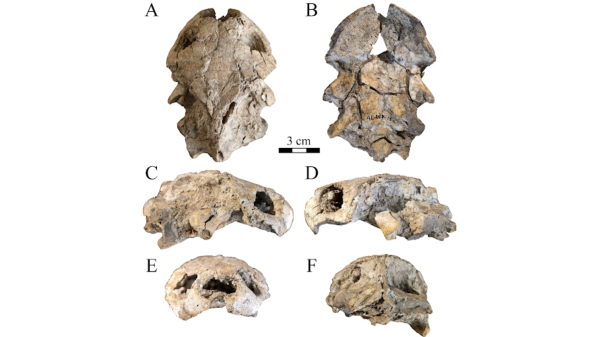Nobel laureate W.E. Moerner to deliver distinguished Eyring lectures at ASU

Nobel laureate W.E. Moerner will deliver distinguished Eyring lectures at ASU on Oct. 24 and 25. Courtesy photo
W.E. (William Esco) Moerner, chemist and applied physicist, will be the featured speaker for the School of Molecular Sciences’ Eyring Lecture Series, to be held Oct. 24 and 25 on Arizona State University's Tempe campus.
Moerner is known by many for — together with Eric Betzig and Stefan W. Hell — winning the 2014 Nobel Prize in chemistry for work that helped make structures and objects inside bacterium and cells less fuzzy in pictures taken by microscopes.
Moerner, the Harry S. Mosher professor of chemistry and professor by courtesy of applied physics at Stanford University, has conducted research in physical chemistry, biophysics and the optical properties of single molecules, and is actively involved in the development of 2D and 3D super-resolution imaging for cell biology.
As Moerner explains, “A single molecule is ridiculously tiny, about one nanometer, roughly 100,000 times smaller than the diameter of a human hair. Yet individual molecules rule the nanoscale activity and structure in our cells and in many nanoscale materials.”
In Moerner’s general lecture “What Is a Single Molecule, and What Can You Do With It?” — which will be presented at 6 p.m. Oct. 24 in the Carson Ballroom of Old Main — he will speak about how when a new regime of science is breached, surprises often occur: Single molecules show amazing dynamics, blink on and off, and can be controlled by light, opening up a new frontier for understanding and applications.
A reception will precede the general lecture on the Alumni Lawn in front of Old Main from 5–5:40 p.m. The lecture will also be available on Zoom: https://asu.zoom.us/j/89257678447.
The technical lecture, “A Brief Survey of Single-Molecule Optical Microscopy in My Laboratory: From Early Spectroscopy in Solids, to Super-Resolution Nanoscopy in Cells, to Photodynamics of Individual Multi-Chromophore Emitters,” will take place at 3 p.m. Oct. 25 in the Bateman Physical Sciences Center, F-wing, room 166. It will also be available on Zoom: https://asu.zoom.us/j/89257678447.
The Eyring Lecture Series is named in honor of the late LeRoy Eyring, an ASU Regents Professor of chemistry and former department chair, whose instructional and research accomplishments and professional leadership at ASU helped to bring the Department of Chemistry and Biochemistry into international prominence. The Eyring Materials Center and the Navrotsky Eyring Center for Materials of the Universe at ASU are named in his honor.
The Eyring lectures are part of an interdisciplinary distinguished lecture series dedicated to stimulating discussion by renowned scientists who are at the cutting edge of their respective fields. Each series consists of a leadoff presentation to help communicate the excitement and the challenge of science to the university and community. Past lecturers have included Nobel laureates Ahmed Zewail, Jean-Marie Lehn, Richard Smalley, Yuan T. Lee, Richard Schrock, John Goodenough, Mario Capecchi and, most recently awarded, Carolyn Bertozzi.
More Science and technology

When facts aren’t enough
In the age of viral headlines and endless scrolling, misinformation travels faster than the truth. Even careful readers can be swayed by stories that sound factual but twist logic in subtle ways that…

Scientists discover new turtle that lived alongside 'Lucy' species
Shell pieces and a rare skull of a 3-million-year-old freshwater turtle are providing scientists at Arizona State University with new insight into what the environment was like when Australopithecus…

ASU named one of the world’s top universities for interdisciplinary science
Arizona State University has an ambitious goal: to become the world’s leading global center for interdisciplinary research, discovery and development by 2030.This week, the university moved…